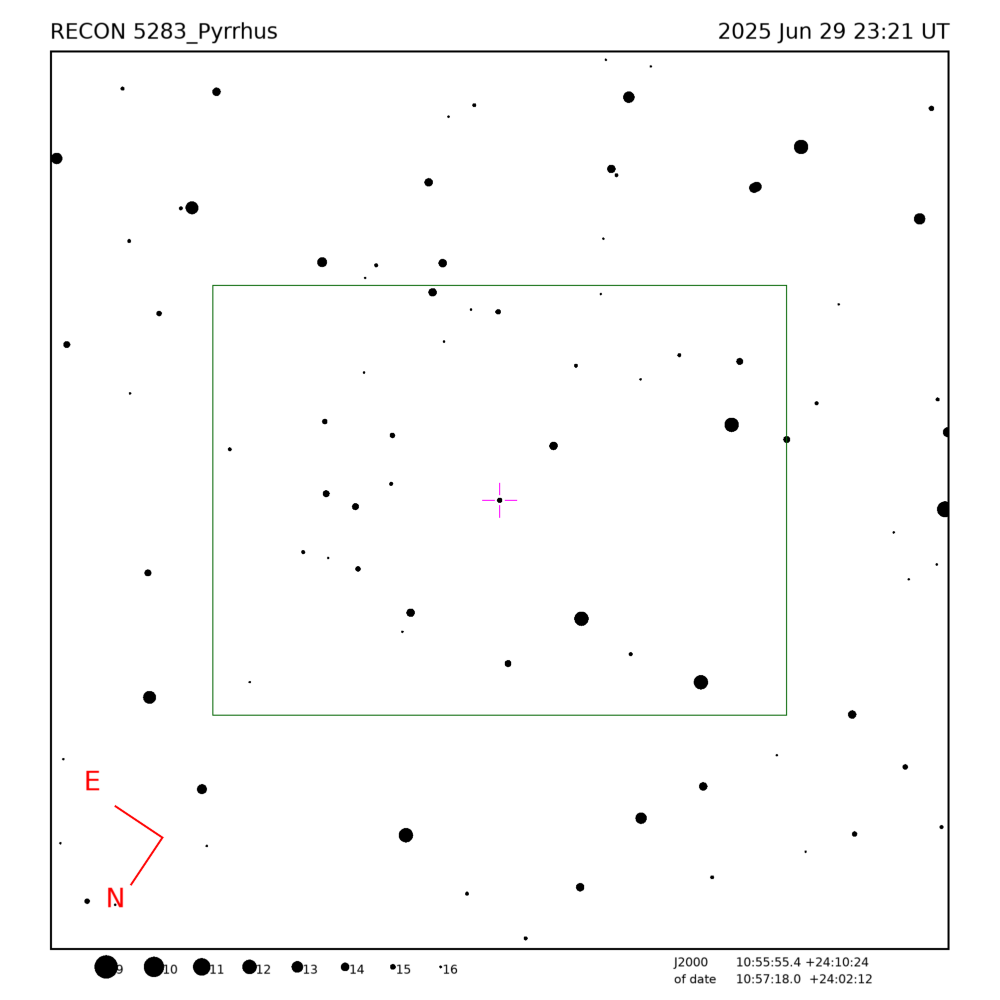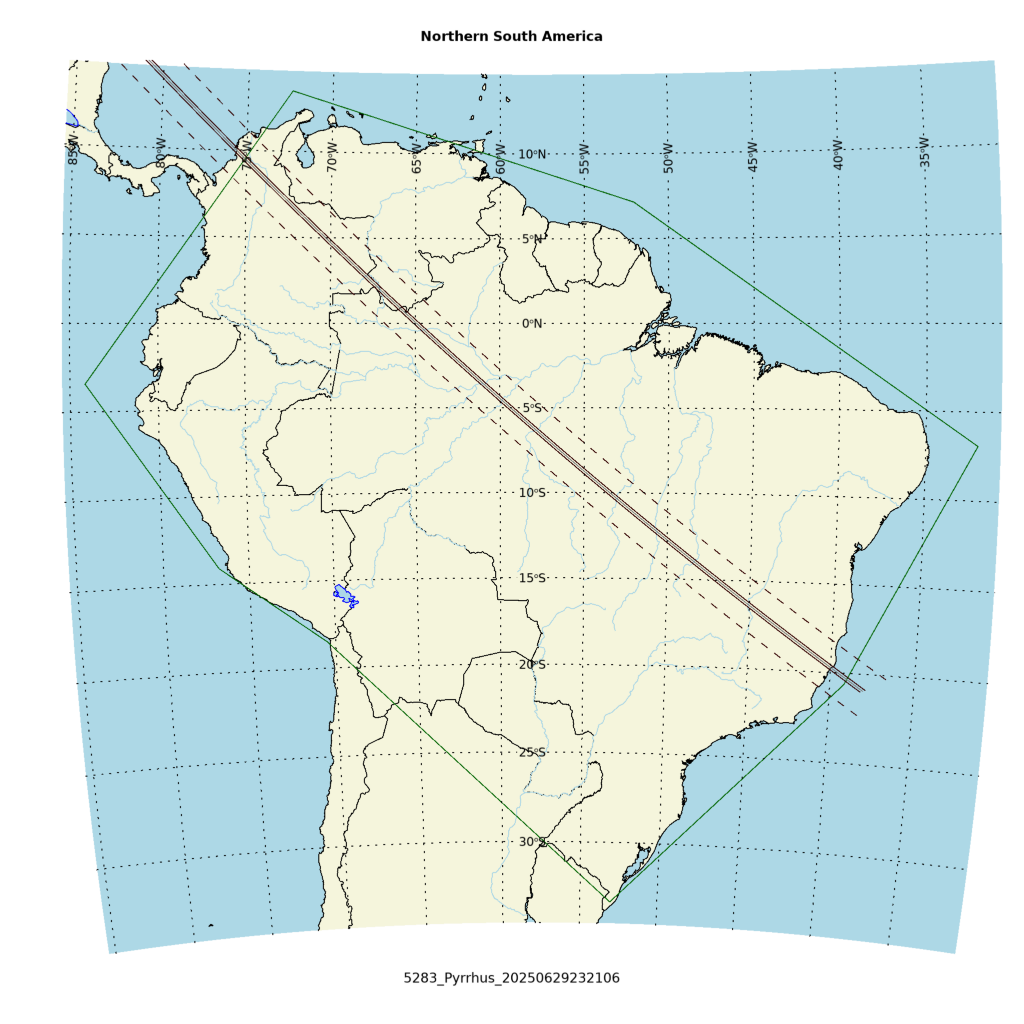
Occultation event with (5283) Pyrrhus, event index number 1102
Regions able to see the event: SAmericaN
Geocentric closest approach at 2025/06/29 23:21:06 UTC
J2000 position of star is 10:55:55.4 +24:10:24
Equinox of date position of star is 10:57:18.0 +24:02:12
Star is 15 degrees from the moon. Moon is 23% illuminated.
Stellar brightness G=15.3, apparent brightess of occulting body is G=15.6
Use an exposure time of 0.55 seconds with the standard RECON-QHY system.
SNR of 5.6 per integration for unocculted signal
Expected flux drop is 57% with SNR of 3.2 for the occulted depth (per occulted point)
Apparent velocity is 29.5 km/sec on the sky relative to the star, or, 26.0 arcsec/hr.
Position angle of asteroid motion is 324.7 degrees
The recommended exposure time corresponds to 16.2 km per image.
The 1-sigma error in the time of the event is 1.6 seconds.
The 1-sigma cross-track error in the shadow position is 37.7 km.
The sky-plane scale is 4079.0 km/arcsec.
Diameter estimates:
65.8 km assuming a 5% albedo, aximum of 2.2 sec for a central chord
26.9 km assuming a 30% albedo, maximum of 0.9 sec for a central chord
Cross-track diameter of 65.8 km used for deployment plan.
Star training set for 5283_Pyrrhus, (2025/06/29 23:21UT) Object RA Dec mag sep mel Regulus 10:09:43.6 +11:50:30 1.3 16.62 6 68Del Leo 11:15:27.6 +20:23:01 2.6 5.57 14 48 LMi 10:56:05.0 +25:21:16 6.5 1.35 16 PPM 100777 10:58:37.5 +24:00:22 8.3 0.30 15 5283_Pyrrhus 10:57:18.0 +24:02:12 15.6 15 Positions are for equinox of date


Star training set for 5283_Pyrrhus, (2025/06/29 23:21UT) Object RA Dec mag sep mel Regulus 10:08:21.9 +11:58:02 1.3 16.62 6 68Del Leo 11:14:06.7 +20:31:22 2.6 5.57 14 48 LMi 10:54:42.1 +25:29:27 6.5 1.35 16 PPM 100777 10:57:15.0 +24:08:35 8.3 0.30 15 5283_Pyrrhus 10:55:55.4 +24:10:24 15.6 15 Positions are for J2000